 |
||||||||||||||
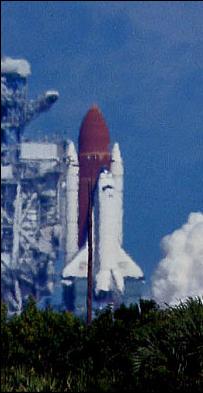 |
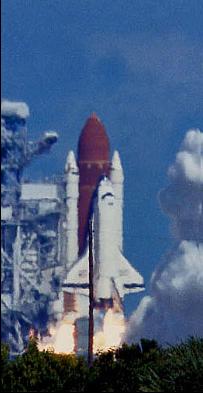 |
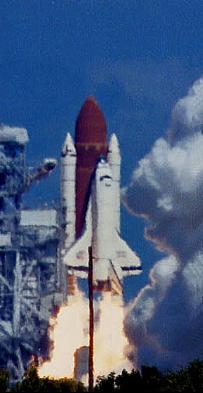 |
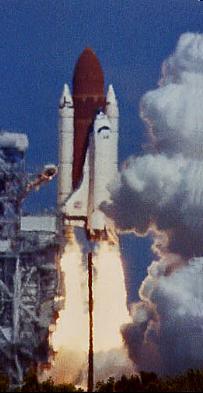 |
The launch sequence at left shows the first two minutes of flight of the Space Shuttle Atlantis on mission STS-34. The photographs were taken from the press site located approximately 3.5 miles from the launch pad. Closer photographs are only permitted using remotely-controlled cameras. I prefer being directly connected to my camera when shooting photos. |
|||||||
STS-34 Launch Sequence Mission Facts Orbiter: Atlantis (5th flight) Launch: 12:53 EDT, 18 Oct. 1989 Location: Kennedy Space Center Shuttle Launch Complex 39-B Landing: 09:33 PDT, 23 Oct. 1989 Location: Edwards Air Force Base Runway 23 Duration: 4d 23h 39m 21s Orbits/Inclination: 79/34.3 degrees Altitude: 185-205 statute miles
Crew Commander: Donald E. Williams Pilot: Michael J. McCulley Mission Specialists MS 1: Shannon Lucid MS 2: Ellen S. Baker MS 3: Franklin R. Chang-Diaz
Payload Galileo Jupiter Orbiter & Probe
Comments Launch delayed by five days because of replacement of engine controller on main engines. Further delay of one day caused by rain in the vicinity of the KSC runway. On launch day a four minute delay was caused by a last minute change of a transatlantic abort site due to weather conditions. Six hours after launch, the Galileo spacecraft was deployed. One hour later the upper stage engine fired, sending Galileo on a perfect trajectory toward rendezvous with Jupiter in 1995. The mission was cut short by two orbits because of forecasted high winds at Edwards AFB. Dense ground fog nearly caused a wave-off for an additional day, however the fog lifted just 12 minutes before the commitment to the de-orbit burn. |
|||||||||||
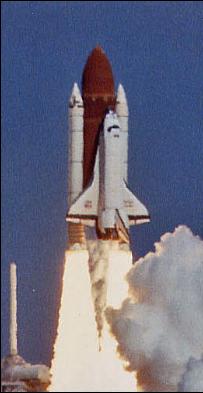 |
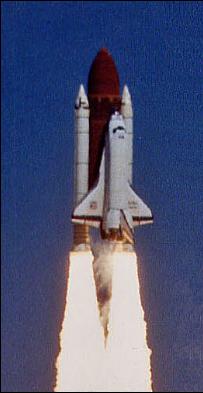 |
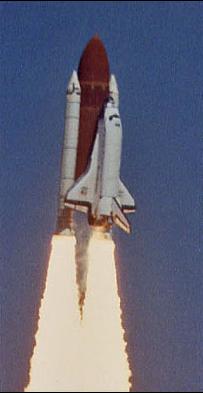 |
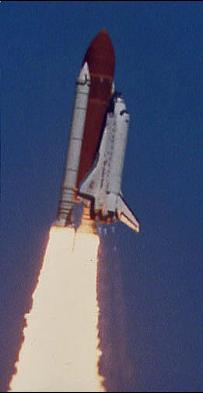 |
||||||||
 |
 |
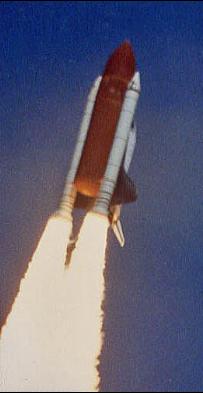 |
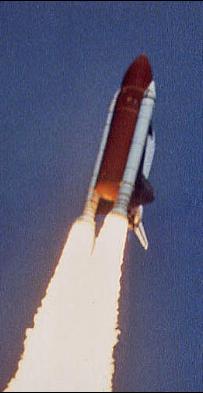 |
||||||||
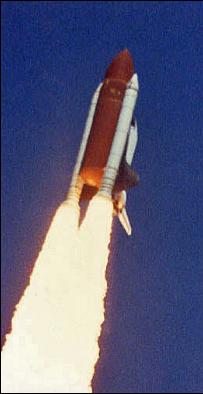 |
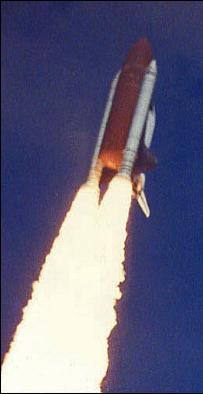 |
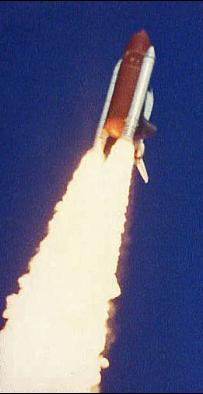 |
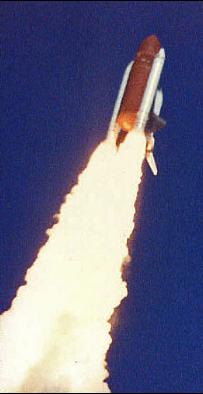 |
|||||
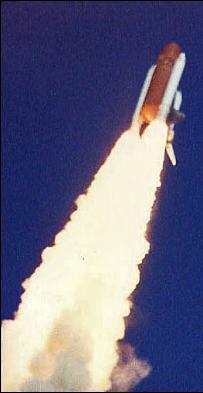 |
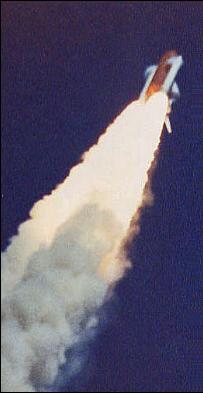 |
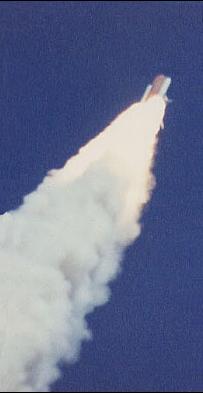 |
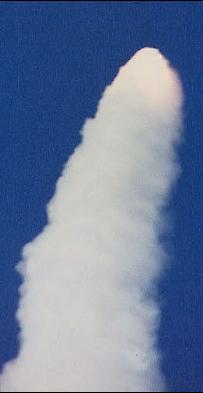 |
|||||
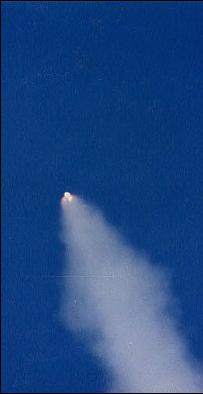 |
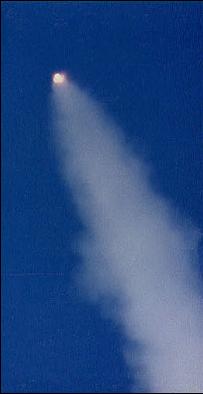 |
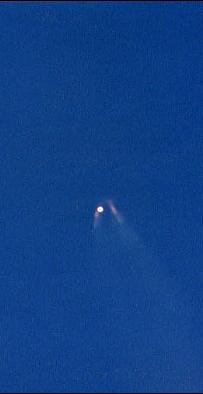 |
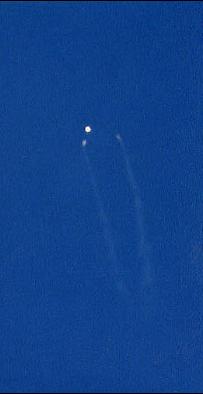 |
|||||
The Launch Experience
The launch of a rocket or missile is an exciting experience. Being present at a Space Shuttle launch is a thrill not to be forgotten. Even though the closest anyone is allowed to the launch for safety reasons is more than 3.5 miles away, you are definitely close enough to get fully exposed to the thunder and majesty of a vehicle hurtling itself into space.
For myself, one of the most memorable parts of a launch is not the sight itself, but the sound that accompanies the liftoff. From the press site vantage point, the speed of sound means that once the engines start out on the launch pad, it takes nearly 15 seconds for that sound to reach across the Florida swampland to your ears. Since the engines start at just under seven seconds before liftoff, the first sound you hear arrives about eight seconds after the shuttle has already left the pad!
Once that sound arrives, you truly feel the full force of the launch, with the waves literally pounding at your chest as the rocket reaches higher and higher. You can even see the sound waves as they come at you, shaking the swamp plants and rippling the water in the basin just in front of you. The sound continues as a low crackling, even after the shuttle is no longer visible to the naked eye, pushing into orbit.
The vision of a launch can never be fully captured in photographs. Even after more than 100 launches and nearly a quarter century of flying, I have yet to see a photo that truly captures what is seen in person. The most dramatic aspect of this is that in photos you see the clean exhaust coming from the Space Shuttle Main Engines (SSME), and the huge clouds of exhaust trailing behind the Solid Rocket Boosters (SRB). The camera washes out the SRB exhaust so that it appears white, with maybe a tinge of yellow or orange near the periphery. (You can clearly see this effect in the photo sequence above.)
Watching the scene unfold in person gives you the true colors of this exhaust. Instead of a bright white light as you would expect, the SRB exhaust looks like liquid gold pouring out the back of the nozzles.
Watching a mission launch into space is something that should be experienced by everyone. It will lift you along for the ride and maybe even kindle the desire to go there yourself someday.
Michelle Evans XXXX |
||
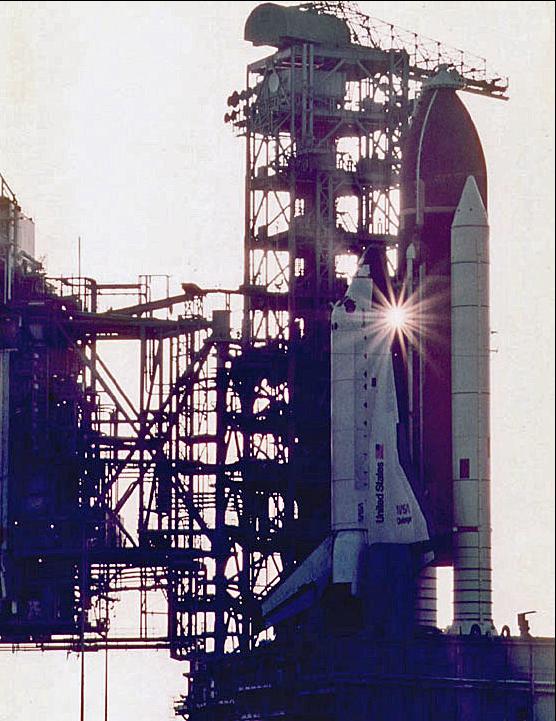 |
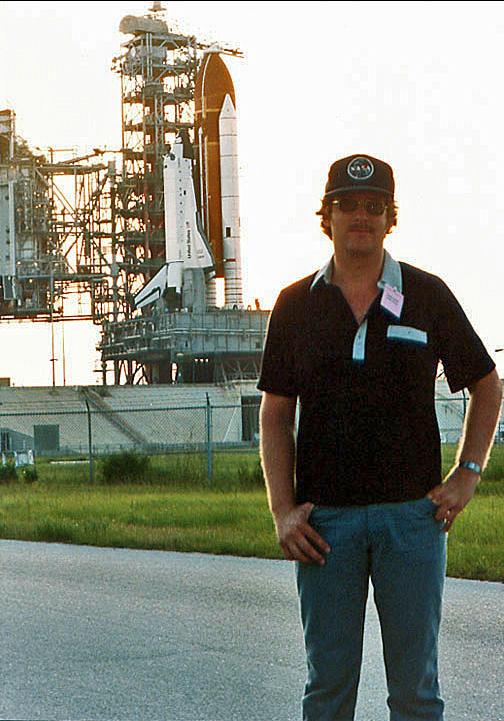 |
|||
Standing next to Launch Complex 39-A the evening before the launch of Challenger on mission STS-7. |
||
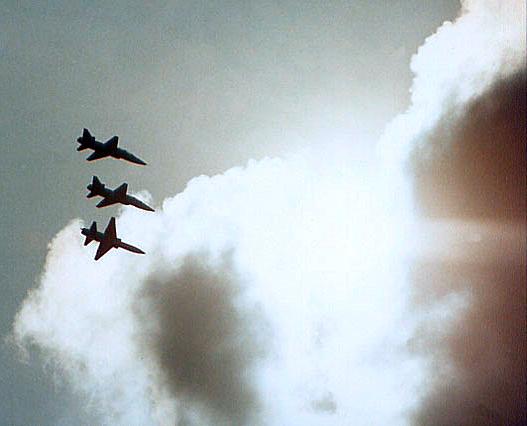 |
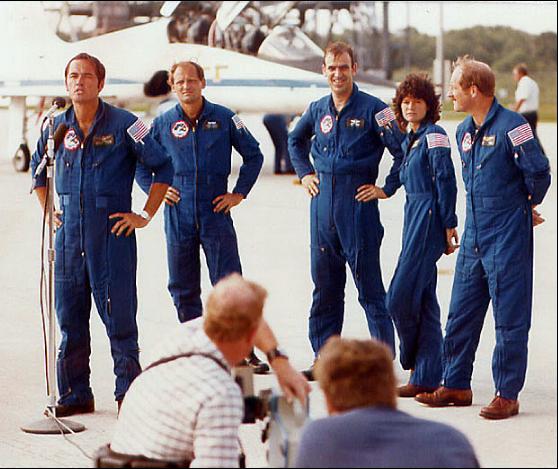 |
|||||
Crew arrival at KSC prior to launch in their T-38 jet aircraft. |
||||||
The STS-7 crew greeting reporters after arrival. (L-R) Robert Crippen, Norm Thagard, John Fabian, Sally Ride, Fred Hauck |
||
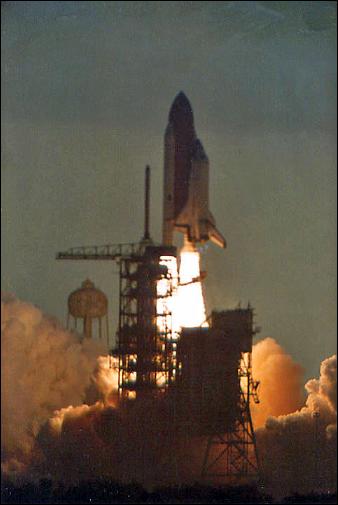 |
STS-7 Launch Sequence Mission Facts Orbiter: Challenger (2nd flight) Launch: 07:33 EDT, 18 Jun. 1983 Location: Kennedy Space Center Shuttle Launch Complex 39-A Landing: 06:56 PDT, 24 Jun. 1983 Location: Edwards Air Force Base Runway 15 Duration: 6d 02 h 23m 59s Orbits/Inclination: 97/28.5 degrees Altitude: 184-196 statute miles
Crew Commander: Robert L. Crippen Pilot: Frederick H. Hauck Mission Specialists MS-1: John M. Fabian MS 2: Sally K. Ride MS 3: Norman E. Thagard
Payload Palapa-B1 and Telesat-F communication satellites
Comments First flight of an American women into space. Sally Ride became the third women to orbit the Earth after Soviet cosmonauts Valentina Tereshkova (June 1963) and Svetlana Savitskaya (August 1982). This was also the first spacecraft ever to carry five astronauts into orbit at one time. The landing was originally scheduled to be the first ever conducted at the Kennedy Space Center, but weather forced a change to Edwards AFB in California. |
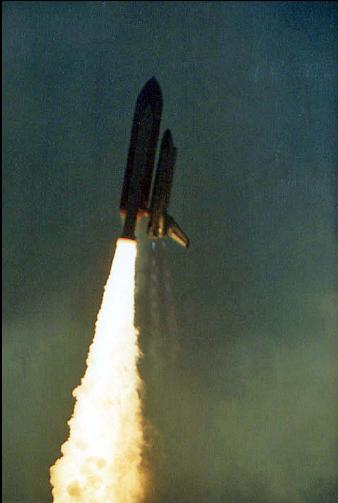 |
||||
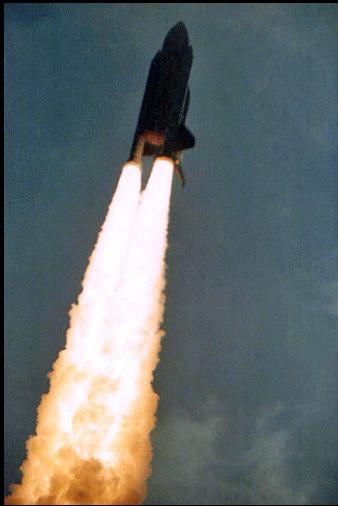 |
 |
|||||
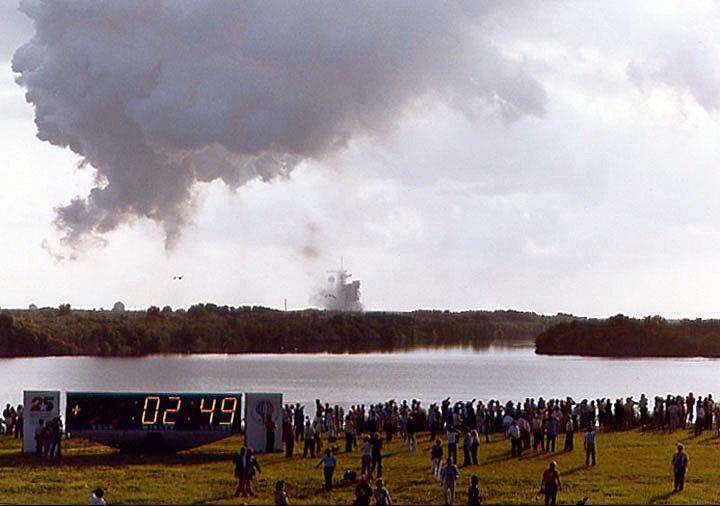 |
||
The view from the press site 2 minutes and 49 seconds after liftoff of Challenger on STS-7. The cloud of SRB exhaust is seen dissipating toward the upper left. The cloud contains toxic chemicals. Soon after this photo was taken we were informed that the wind had shifted and the cloud was coming toward the press site. We were advised to vacate the area. |
||
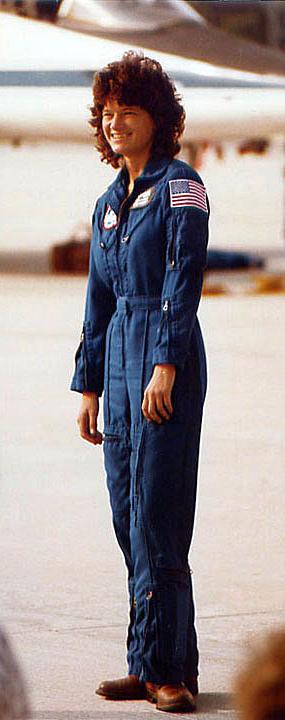 |
||||||
Sally's E-Ticket Ride At the time of STS-7, Disneyland still used a ticket book for the various attractions at their theme parks. The kiddy rides used an A-ticket and they got progressively better up to an E-ticket for the top rides. Soon after reaching orbit, Mission Control asked Sally how the ride on the shuttle had been. She was enthusiastic, explaining it was definitely an "E-ticket ride." I still had a complete ticket book from Disneyland and, several years later, met up with Sally again. She graciously signed my book right on the infamous E-ticket. |
||||||
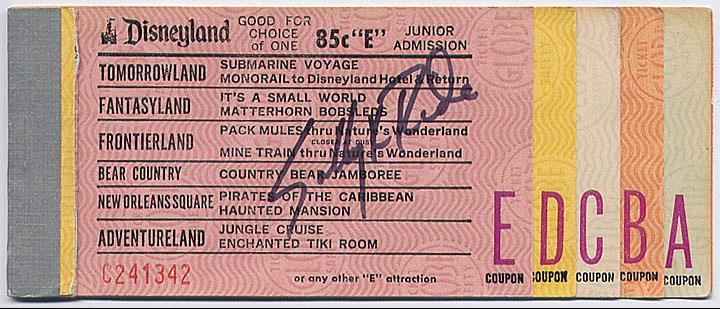 |
||||||